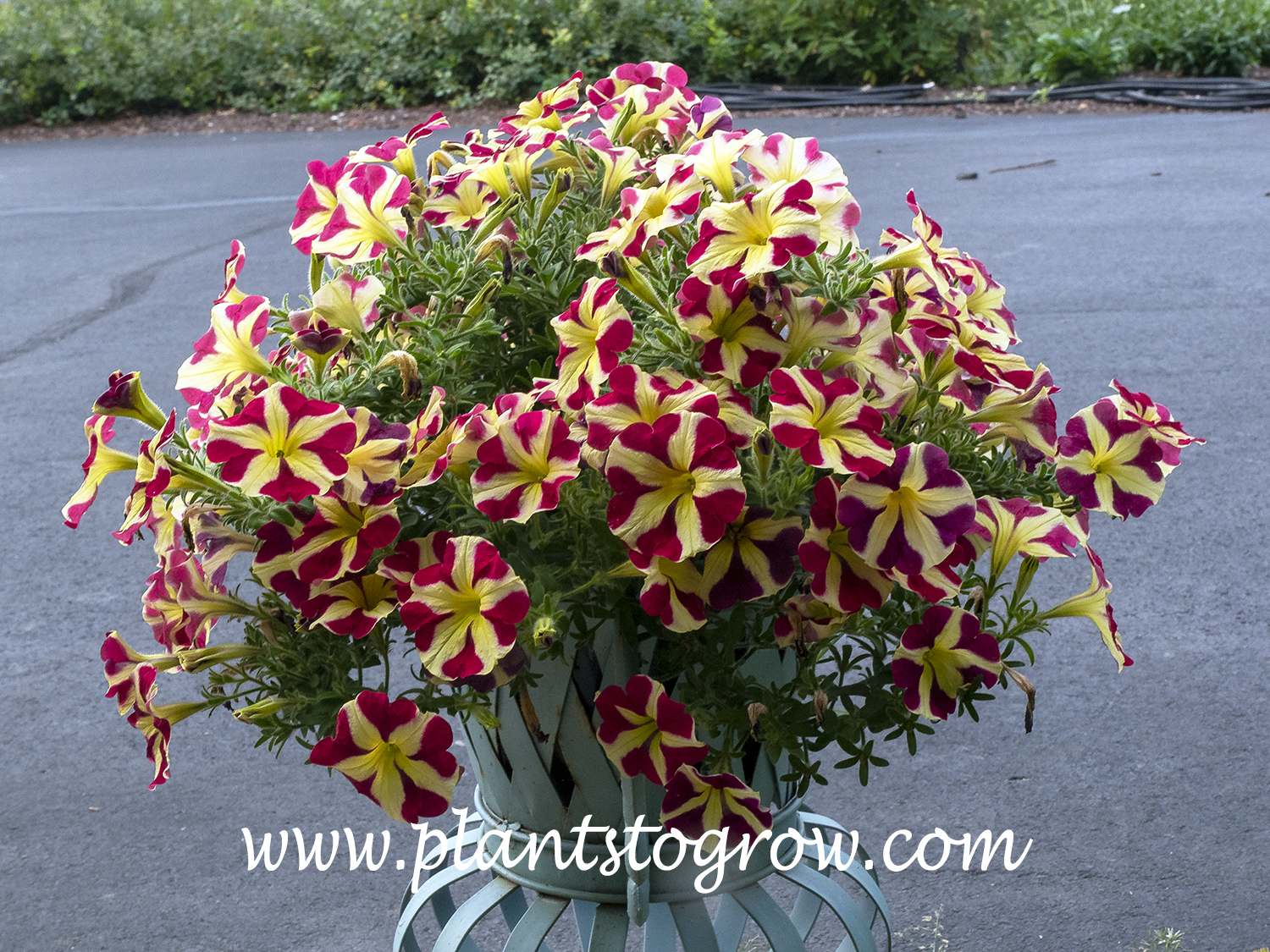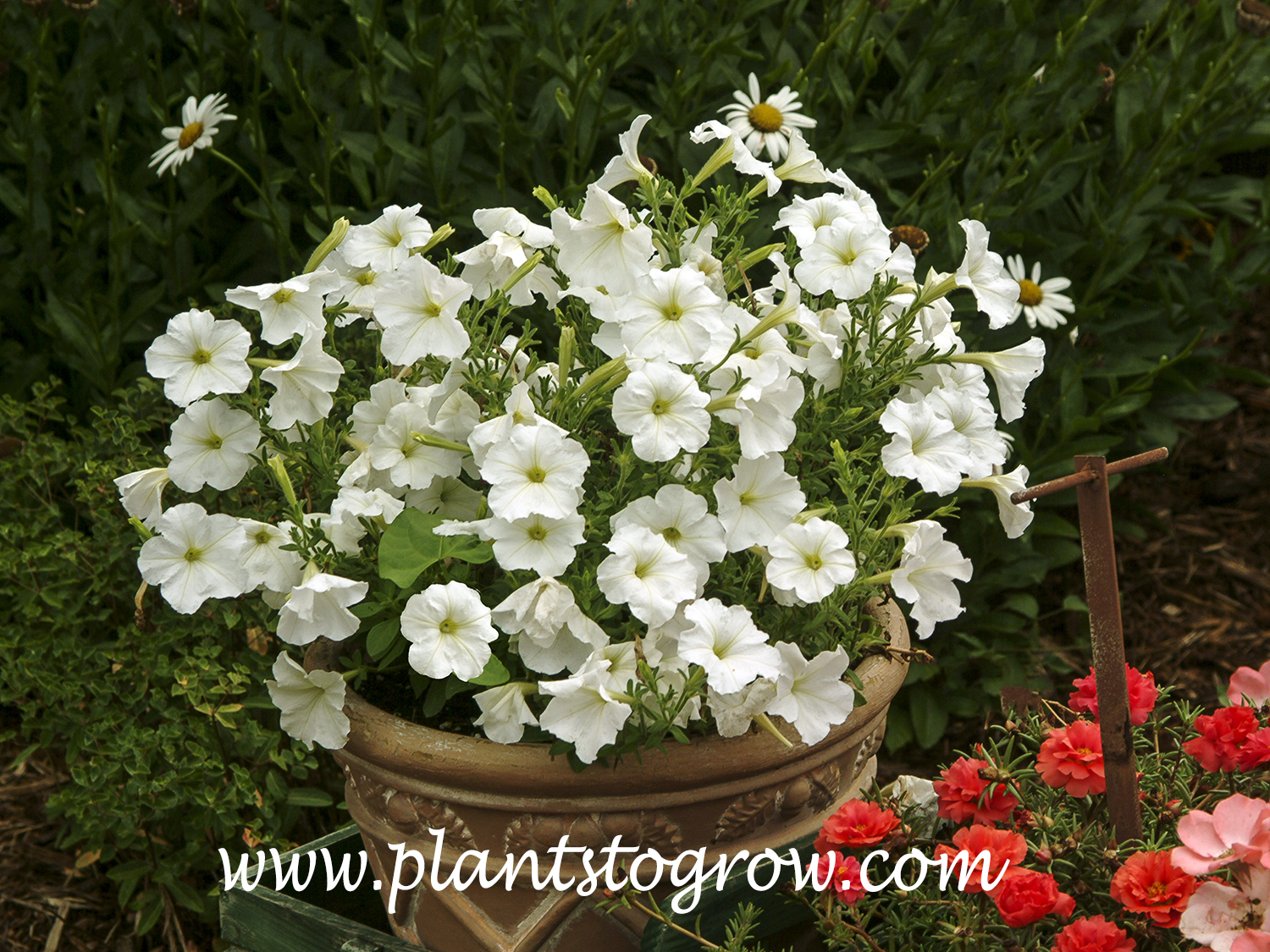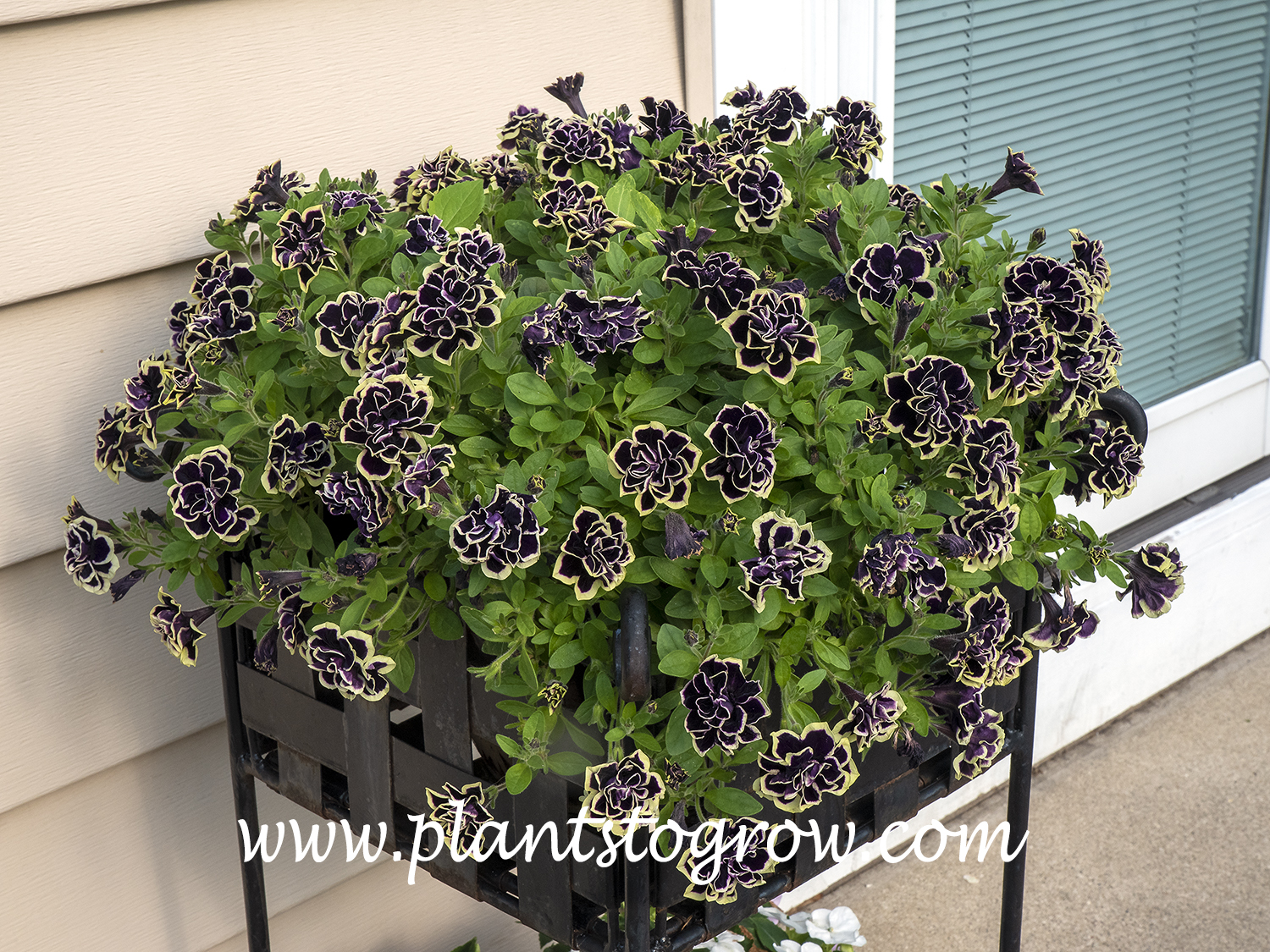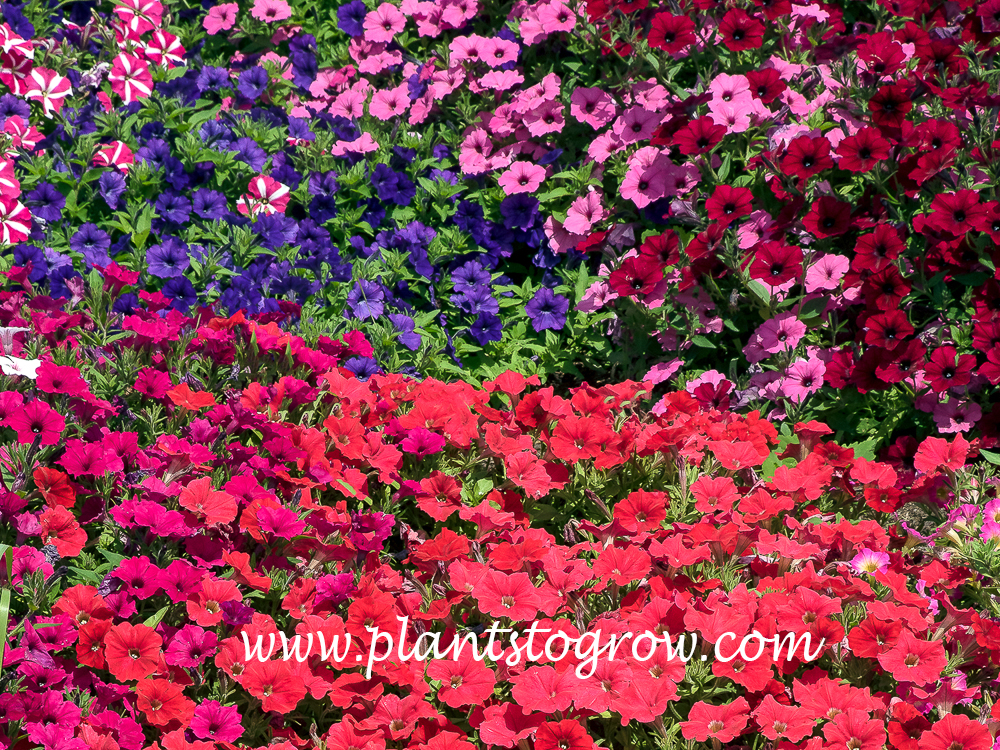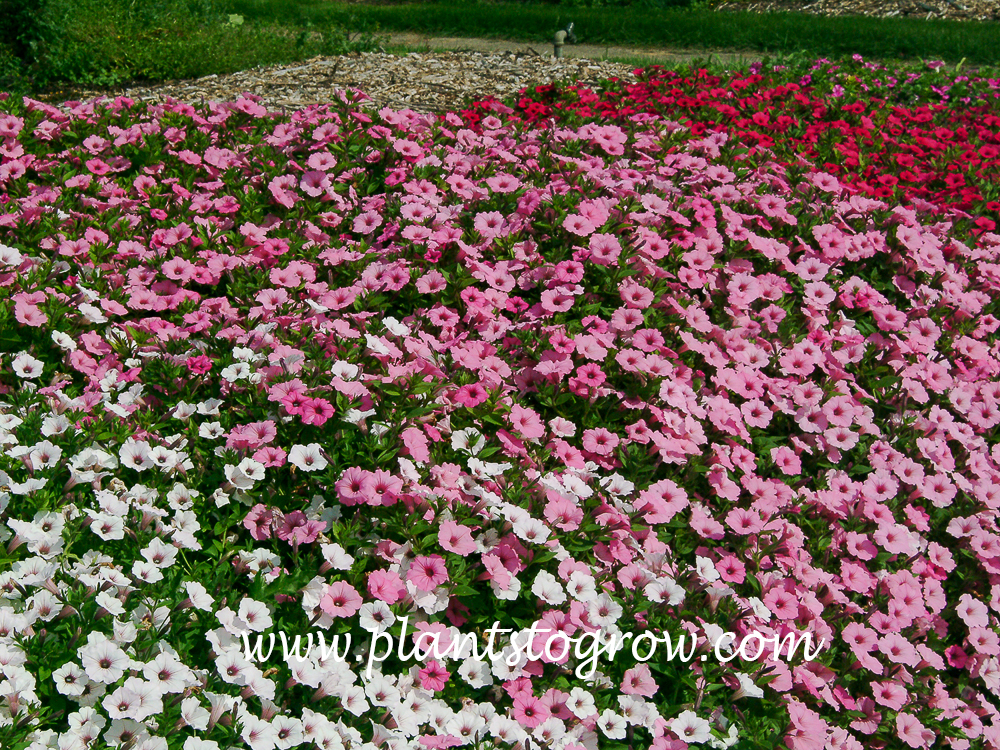| Description | Petunias are reliable, showy, easy to grow flowering annuals, and often considered "Everyday Flowers." An extensive color range with contrasting veins, ruffled edges, large flowers, tiny flowers, singles, and doubles. They are used in hanging baskets, window boxes, containers, and the garden. |
|---|---|
| Plant Type | Annuals, Site author's observations |
| Hardiness Zone | 10-11 |
| Sunlight | do best in a minimum of 1/2 day of sunlight |
| Moisture | average, if grown in containers will need more water as they become root-bound |
| Soil & Site | prefers well-drained but will tolerate average, never soggy. |
| Growing Media | average patio |
| Temperature | Acclimated plants are very tolerant of cooler to cold temperatures. In zone #5 they do good in the early spring to early summer (May-June) and fall. I have had Petunias in bloom with some protection on Turkey Day. Hardened Petunias can be planted in early May (zone #5) |
| Flowers | funnel-shaped corolla tube flaring into a broad lip that sits in a calyx consisting of five sepals, size varies from 1 to 4 inches, almost every color is found in this plant's palette including bicolors, veined, etc. |
| Leaves | alternate, covered with a viscid pubescence, making them sticky when pinched |
| Roots | fiborous |
| Dimensions | vary from low carpet creeping types spreading up to 4 feet to ones that reach 12 or more inches in height. |
| Maintenance | Container plants can be pruned to keep the plants compact. Deadheading will promote longer bloom time in both bedded and container-grown plants. Plants in the garden may need cutting back in the hotter times of the year. Petunias will reseed, but the prodigy will not be true to type. I have found seedlings in the expansion cracks of my patio. |
| Propagation | seeds, cuttings |
| Misc Facts | The first Petunia was discovered in Brazil by a French commission in 1823. Petunia nyctaginiflora was white, night-blooming, and sweet-scented. Most of the original plants were produced by crossing P. nyctaginiflora with P. viloacea and P. bicolor. By 1840 the Petunia was a fashionable plant. Most plants are listed today as Petunia x hybrid. Petunia is derived from the French word petunias, a Brazilian name for tobacco. |
| Author's Notes | I have grown Petunias as bedding plant crops and used them in many gardens and containers throughout the years. They are very hardy and come in a plethora of colors and sizes. The breeders are continually creating new and better cultivars. |
| Notes & Reference | #28-Cottage Garden Annuals (Clive Lane) , #40-Herbaceous Ornamental Plants (Steven Stills) , #51-Armitage's Manual of Annuals, Biennials, and Half-Hardy Perennials (Alan Armitage) |

Cart
